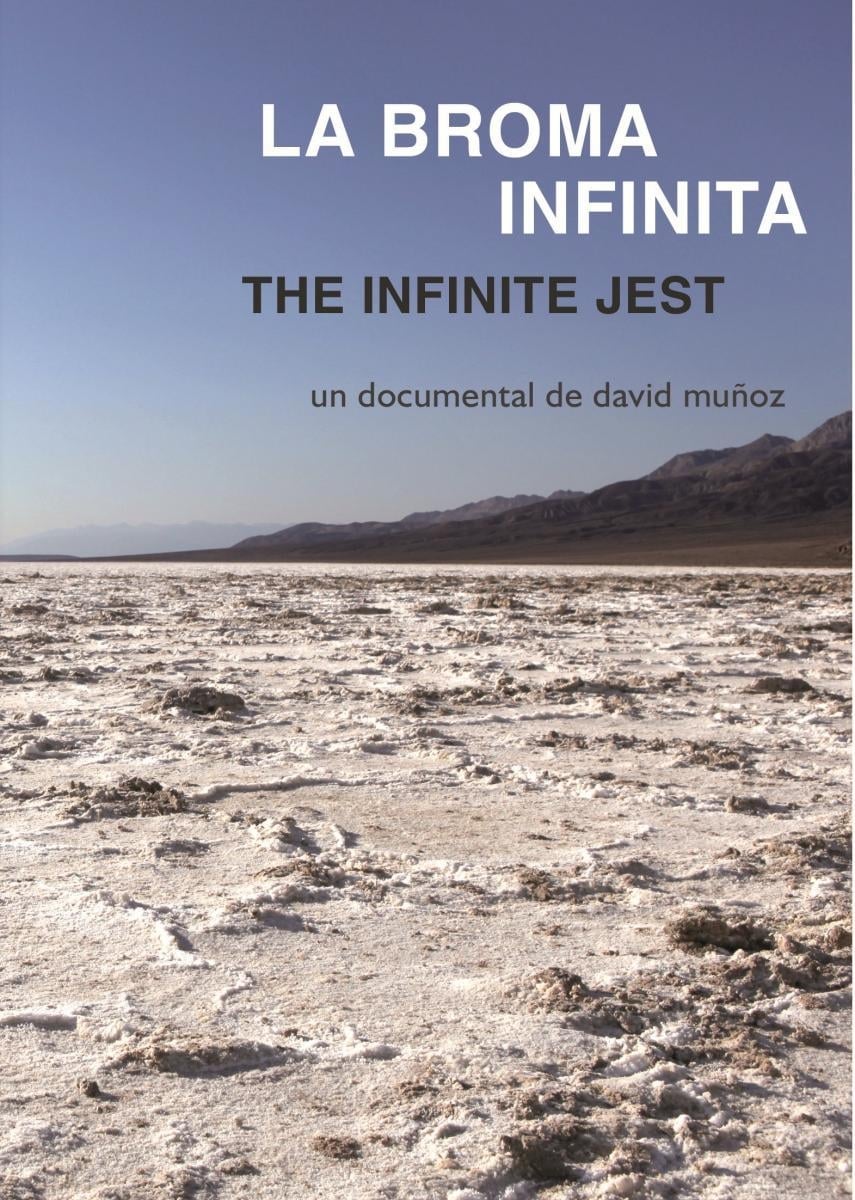Spoilers:
- Joelle may not be deformed.
- Hal is unable to communicate.
- The “Entertainment” film is lethally addictive.
- James Incandenza created the fatal film.
- Don Gately takes a bullet protecting others.
- Orin Incandenza captured by terrorists.
- Joelle struggles with addiction and identity.
- Ennet House is a main setting.
- Lyle dispenses cryptic wisdom.
- Interdependence between small moments and larger tropes.
Statistics for “Infinite Jest”
- Total Pages: 1,079
- Footnotes: 388
- First Published: 1996
- Author: David Foster Wallace
- Publisher: Little, Brown and Company
- Estimated Word Count: 543,709
- Main Themes:
- Addiction
- Entertainment
- Loneliness
- American Culture
- Setting:
- Boston
- Enfield
- Year of the Depend Adult Undergarment
- Key Characters:
- Hal Incandenza
- Don Gately
- Joelle Van Dyne
- James Incandenza
Notable Elements
- Complex narrative structure
- Extensive use of footnotes
- Dense, intellectual prose
- Exploration of philosophical and existential themes
Reception and Impact
- Initially had mixed reviews
- Gained a cult following over time
- Considered a significant work in American literature
David Foster Wallace’s Infinite Jest is a complex narrative journey through the dichotomy of absurdity and reality. It weaves a disorienting world set in a dystopian future, with its framework built upon themes of addiction, entertainment, and the relentless search for happiness. Viewing society through a satirical lens, it explores our insatiable hunger for superficial distractions, unmasking the tragicomic show we’re all unwittingly a part of.Wallace’s labyrinthine style, with its footnotes acting as mini-narratives, gives a layered depth favorable to introspection. An undercurrent of melancholy permeates, reflecting our collective inability to deal with the harsh realities of life, buffered by our reliance on substances, entertainment, and even ambition. The author’s explorations of human experience, from humbling vulnerability to insightful brilliance, moulds the characters not as mere fictions, but living, breathing advocates for their emotional states.The author’s intellectual prowess is underscored in the book’s structure. Like a jigsaw puzzle with scattered pieces, readers must actively engage to piece together the storyline. It’s not merely a book, but a cerebral exercise demanding patience and persistence.Infinite Jest is an enduring critique of modern society’s attempts at creating distraction-filled utopias. It’s an intricate tale that oscillates between paranoia, profundity, and humor, echoing with profound insights about contemporary life and human nature.Its fundamental message is voyeuristic, making the reader a spectator of their own amusement, living the very critique the novel presents. A mind-bending tour de force, Infinite Jest is an epic of literary dexterity that demands and rewards careful reading, while leaving an indelible and provocative impression.
Introduction to Infinite Jest
“Infinite Jest,” a sprawling mammoth of a novel by David Foster Wallace, is considered one of the most significant works of the late 20th century. Published in 1996, it quickly garnered admiration and criticism alike for its complexity, depth, and often bewildering narrative structure.
Interesting Facts
- The novel spans over 1,000 pages, including endnotes, which are an integral part of the book.
- Wallace spent almost a decade working on “Infinite Jest,” meticulously crafting its detailed and intricate plot.
- The book features a vast array of characters, subplots, and themes, exploring topics like addiction, entertainment, and the pursuit of happiness.
Speculation and Interpretation
One of the most intriguing aspects of “Infinite Jest” is its ambiguous, open-ended narrative. There’s speculation about its timeline and the fates of key characters. Some interpretations suggest it challenges traditional narrative structures, urging readers to actively engage and deduce their own conclusions.
Bizarre and Fascinating Elements
- The book’s title refers to a fictional film within the novel, dubbed the “Entertainment,” that is so captivating it incapacitates viewers.
- Wallace’s use of endnotes—a novel over 388 of them—has been both praised and criticized, seen as a component of the book’s unique and daunting architecture.
Public Perception Over Time
Upon its release, “Infinite Jest” was hailed as visionary by some and excessively pretentious by others. Over the years, it has burgeoned into a cult classic, often regarded as a rite of passage for serious readers. Seen as intellectually demanding, the novel has sparked extensive analysis, for both its narrative audacity and dense realism.
Today, “Infinite Jest” stands as a testament to Wallace’s genius and ambition. It has inspired countless interpretations, academic discourse, and a persistent conversation on its place in modern literature.
Infinite Jest: A Beat-by-Beat Breakdown
David Foster Wallace’s 1996 mammoth novel, “Infinite Jest,” is a beast. Here are the punchy beats, no fluff.
Opening Gambit
Hal Incandenza’s college interview – Weird, intense, and sets the mood. Hal’s brilliant but can’t communicate. A taste of the confusion to come.
Enfield Tennis Academy
Life at ETA – A mix of rigorous training, teenage angst, and substance abuse. Ultra-competitive, ultra-bizarre.
Hal’s Family Dynamics
The Incandenza Clan – Genius dad’s suicide. Mom’s affairs. Brothers’ own battles. A dysfunctional genius family deeply tied to the academy.
The Entertainment
The lethal cartridge – The film so entertaining it’s deadly. The quest to find and control it drives the plot into madness.
The Rehab Facility
Life in Ennet House – Where paths cross between addicts in recovery and tennis prodigies. Real, raw, and sometimes hilarious.
The Political Landscape
O.N.A.N. and the Great Concavity – A future North America twisted by corporate sponsorship and toxic waste. Satire with a sharp edge.
The Quest
Search for the Entertainment – Various factions hunt for the lethal film. A wild, sprawling chase that’s both farcical and tragic.
The Philosophy
Themes and Digressions – Addiction, entertainment, and the pursuit of happiness. Deep dives into what makes life worth living, or not.
Hal’s Descent
Endgame – Full-circle to Hal’s non-communicative state. A battle with inner demons, paralleling the outer chaos.
The Final Beat
Unresolved Mysteries – No neat endings here. Questions linger, the quest incomplete, leaving readers to fill in the gaps.
Wrap-Up
There it is. “Infinite Jest” in beats. It’s a labyrinthine journey through a future that feels uncomfortably close. Wallace’s epic doesn’t handhold; it challenges you to hang on for the wild ride.

Story Opening Breakdown of Infinite Jest
The opening of “Infinite Jest” throws readers into a chaotic world. It starts with dialogue and immediate action. Characters are introduced with a sense of urgency and disorientation. This is a hallmark of David Foster Wallace’s style. The narrative uses fragmented thoughts and non-linear storytelling to mirror the complexities of addiction and entertainment in modern life.
Story Formula Breakdown
The formula of “Infinite Jest” is intricate. It intertwines various narratives that crisscross over time and space. Key elements include:
- Multiple Perspectives: Characters with their own arcs and issues.
- Thematic Depth: Exploration of addiction, entertainment, and isolation.
- Non-linear Timeline: Events do not follow a traditional chronological structure. Flashbacks and present timelines coexist.
- Extended Narrative: Lengthy passages, digressions, and footnotes provide essential context and commentary.
Character vs. Story Driven
The story is more character driven. While the plot has a framework, it is the characters and their development that pull the reader in. Their struggles and interactions create a rich texture that overshadows the central plot.
Memorable Characters
Characters in “Infinite Jest” are memorable due to their complexities and flaws. Each character is a mosaic of contradictions, desires, and failures. Elements that stand out are:
- Depth: Characters like Hal Incandenza and Don Gately have intricate backstories that shape their identities.
- Relatability: Their fears, addictions, and aspirations resonate with readers.
- Unique Voices: Wallace’s distinct narrative style amplifies the voices of characters, making them realistic and engaging.
Main Characters Overview
- Hal Incandenza: A talented tennis player grappling with the pressures of expectations and substance abuse.
- Don Gately: A former addict who works at a rehabilitation center, fighting his past while helping others.
- Joelle Van Dyne: A woman straddling the worlds of addiction and fame, struggling with her own demons.
- James Incandenza: The elusive creator of “Infinite Jest,” a film that plays a critical role in the narrative’s themes of entertainment.
Template for Writing Story Flow
Here’s a concise template for developing a similar story structure:
- Define Core Themes: Identify the central themes you want to explore.
- Create a Character List: Develop a diverse cast with unique backgrounds and motivations.
- Establish Setting: Choose a setting that complements your themes and characters.
- Outline Non-linear Narrative: Plan out how the story will jump between timelines and perspectives.
- Include Character Arcs: Map out how each character will evolve or regress over the course of the story.
- Incorporate Thematic Elements: Weave in your themes through dialogue, conflicts, and character decisions.
Simple Synopsis of the Story
“Infinite Jest” is about addiction and the pursuit of happiness. It explores how entertainment and drugs serve as escapes but often lead to deeper isolation. The narrative follows various characters through their struggles, interlinking their lives and choices, depicting a society caught in an endless cycle of pleasure and pain.
Inciting Incident
The inciting incident in “Infinite Jest” revolves around the discovery of the film “Infinite Jest.” This film, produced by James O. Incandenza, offers an experience so pleasurable that viewers become incapacitated. The symbolism here represents the façade of entertainment and the addictive nature of pleasure in contemporary society. It suggests the dangers of escapism and how it can lead to self-destruction.
Act Structure
The book has a non-traditional act structure, fragmented and nonlinear, resembling the chaotic lives of the characters. Here’s a breakdown:
- Act 1: Introduces the main characters like Hal Incandenza, Don Gately, and the themes of addiction, competition, and the pressures of life. The Ennet House and the Incandenza family are significant settings.
- Act 2: The narrative dives deeper into the lives of the characters. It explores the relationships between them, particularly the struggles with addiction. For example, Gately’s backstory is revealed, showing his past as a criminal and how he ends up at Ennet House.
- Act 3: The various plot lines start to converge. The book begins to reveal the stakes involved with “Infinite Jest.” Characters make desperate decisions, and tensions rise as the implications of pleasure and pain unfold.
Climax
The climax occurs when the various storylines reach a breaking point, primarily during the events surrounding the film. The emotional capital here is immense; it captures the despair and urgency that addiction creates. The lead-up involves the gradual entrapment of characters in their respective fixations, ultimately leading to confrontation and realization.
Tension and Release
The book builds tension through complex character arcs and a series of escalating stakes. For instance, the more characters indulge in their addictions, the tighter the web of destruction becomes. Momentary releases occur through humour and absurdity, contrasting the weighty themes. Characters occasionally find fleeting moments of clarity or connection, only to have the tension tighten once more.

Ending of Infinite Jest Explained
The ending of Infinite Jest is ambiguous and open to interpretation. It wraps up some storylines but leaves many questions unanswered, which can be frustrating but also thought-provoking.
Ending Summary
The final scenes leave the fate of various characters unclear. We see Hal Incandenza in an interview, struggling to communicate. Don Gately, in a moment of clarity, reflects on his life choices and the nature of addiction. The novel ends without a clear resolution, suggesting that life’s challenges remain unresolved and cyclical.
Writer’s Categorization
- Ambiguous
- Postmodern
- Tragicomic
Symbolic, Thematic, and Speculative Meanings
The ending symbolizes the struggle against addiction and the human condition. It highlights the futility of seeking absolute happiness, a recurrent theme throughout the book.
Speculatively, it prompts questions about free will versus determinism. Are we trapped in cycles, or can we change our paths?
Loose Ends and Payoffs
The ending resolves some tensions, such as Hal’s relationship with his family and Gately’s recovery journey. However, it leaves many plot points unresolved, like the fate of the various Entropy elements and the precise outcome of Hal’s interview.
Character Changes
Characters like Hal face their demons but don’t find satisfying conclusions. Gately shows growth, but it’s mixed with a sense of despair. Overall, there’s a sense that while some characters have made progress, many remain trapped.
Lessons for Writers
This ending teaches writers about the power of ambiguity. Resolutions don’t always have to come neatly wrapped. People relate to rawness and uncertainty in storytelling. An unresolved ending can invite deeper engagement with your work.
Dialogue Style in Infinite Jest
David Foster Wallace’s dialogue in “Infinite Jest” is marked by its authenticity and complexity. Characters often speak in long-winded, stream-of-consciousness styles that capture the chaos of their thoughts and emotions. The dialogue reflects their personalities and dilemmas, revealing much about their internal struggles.
Examples of Dialogue
Consider this exchange between Hal Incandenza and a university admissions officer:
“I’m really not sure how to convey—I mean, I had thought of a few examples, and when I looked at them I thought of their shortcomings.”
This line showcases Hal’s anxiousness and meticulous thought process. He often struggles to communicate himself clearly, reflecting the broader theme of disconnect.
Quintessential Character Moment
A quintessential moment occurs during Hal’s interview at the University of Arizona. His thoughts race ahead of his words, capturing his inner turmoil. Wallace uses this scene to demonstrate Hal’s struggle between his articulate intellect and his inability to express himself effectively in real-time.
Iconic Lines
- “The author of this novel is not as smart as you think.”
- “It’s all about connection.”
- “What is the deal with the deal?”
These lines share critical themes of perception versus reality and the struggle for meaningful connections.
Uniqueness of the Dialogue
The dialogue is unique due to its intertwining of humor and earnestness, layered with philosophical and cultural references. It can jump from mundane topics to existential questions seamlessly, keeping readers engaged.
Dialogue Density
The text is dialogue-heavy, contrasting with the dense narrative prose surrounding it. Wallace often uses dialogue to propel the narrative, revealing character traits and social commentary through conversations.
Realism of the Dialogue
The dialogue is realistic, reflecting how people actually speak: interrupted thoughts, incomplete sentences, and diverse speech patterns. It’s relatable and disjointed, mirroring chaotic thoughts.
Lessons for Writers
- Capture the essence of characters through dialogue.
- Use dialogue to reveal inner conflict.
- Blend humor with serious themes to create balance.
Scene Walkthrough
Take a scene where Don Gately converses with a fellow resident at Ennet House:
“You think you can tell me what to do?” Gately asks. “Who are you, a big shot?”
Gately’s frustration emerges. The dialogue is terse yet packed with emotion. It conveys vulnerability, strength, and the struggle of addiction. The back-and-forth highlights the power dynamics and desperation of the characters. Wallace uses this conversation to delve into Gately’s psyche, showing both his tough exterior and his inner conflicts.
The interjections and raw emotions make it realistic. Readers can feel the tension in the air. This scene exemplifies how Wallace’s dialogue serves not just to tell the story, but to build complex character arcs and deeper themes.
Infinite Jest: A Poetic Exploration
In the whirl of screens and mirrored selves,
Jokes float like vapor:
a laugh tracked by a drugged haze.
Time a loop,
like tape unspooling—
small moments stretch,
and fold over.
The jest eternal:
Fleeting, elusive,
it winks from the margins,
- Fiction, addiction,
- the tennis of minds,
- the televised face-down.
Faces in screens,
smiles that fracture,
an ache for connection—
the jest forever
lost in its echo.
And still,
to jest, to live,
in this unending play,
when joy collides with
the weight of silence.
Find a crumb of laughter,
and hold it dear.
We are all jesters
in this infinite game.
Unique Writing Lessons from Infinite Jest
The brilliance of Infinite Jest isn’t just in its complexity. It’s a treasure trove of writing insights.
-
1. Embrace Footnotes
Wallace uses footnotes to expand ideas without bogging down the main narrative. It allows for digressions that add richness. Consider how additional context can deepen your story.
-
2. Nonlinear Structure
The non-chronological timeline challenges readers. It makes connections through themes instead. Experiment with timeline shifts to create intrigue.
-
3. Authentic Dialogue
Characters speak like real people, complete with interruptions and unfinished thoughts. Capture the chaos of conversation to make your dialogue more relatable.
-
4. Explore Obsession
Wallace delves deep into addiction and obsession. These themes resonate. Don’t shy away from uncomfortable subjects; dive into what fascinates or disturbs you.
-
5. Use Humor to Break Tension
Amid dark themes, Wallace interjects humor. It balances severity and makes serious topics accessible. Lighten heavy content with unexpected levity.
-
6. Layered Narratives
The interweaving stories create a complex tapestry. Test how multiple perspectives can enrich a single theme or plot.
-
7. Detailed World-Building
Wallace crafts a vivid, detailed world. Every element feels deliberate. Invest time in creating a setting so real that it becomes a character in its own right.
-
8. The Power of Repetition
Reiterated phrases add emphasis and build emotional weight. Use repetition strategically to engrain key ideas in your reader’s mind.
-
9. Emotional Honesty
Characters feel genuine because their emotions are raw and real. Strip away pretense to show vulnerability in your characters.
-
10. Experiment with Language
Wallace plays with syntax and vocabulary. Push boundaries in your own writing; don’t settle for the usual word choices or sentence structures.
David Foster Wallace Discography
- Fiction:
- “The Broom of the System” (1987)
- “Infinite Jest” (1996)
- “The Pale King” (2011, posthumously)
- Essays:
- “A Supposedly Fun Thing I’ll Never Do Again” (1997)
- “Consider the Lobster and Other Essays” (2005)
- “Both Flesh and Not” (2012, posthumously)
- Short Stories:
- “Girl with Curious Hair” (1989)
- “Oblivion” (2004)
- Nonfiction:
- “This Is Water: Some Thoughts, Delivered on a Significant Occasion, about Living a Compassionate Life” (2009)
- “Fate, Time, and Language: An Essay on Free Will” (2015)
- Interviews and Conversations:
- “Although of Course You End Up Becoming Yourself” (2010)
Writing Style
David Foster Wallace’s writing style is characterized by its dense, footnote-laden prose that combines humor and existential depth while examining contemporary American life.
1. Goodreads Review by Nayef Abou Jahjah:”I wouldn’t wish Infinite Jest on my worst enemy… But on the other hand, I cannot recommend this book highly enough… David Wallace’s genius is palpable, tangible and in-your-face, from the apocalyptic landscape of a world transformed by waste to the convoluted timeline of events, from the cast of hundreds of unique characters to the arcane vocabulary that could have only been painstakingly assembled by a talented lexicographer.”Review Link: https://www.goodreads.com/review/show/7445678502. The New York Times Review by Tom LeClair:”David Foster Wallace’s lovesick novel, “Infinite Jest,” is at heart a two-pronged love affair — a genius’s love for the tropes of avant-garde writing and a young man’s love for his particular corner of the corporeal world — and the circumstance that allows this love affair to proceed.” Review Link: https://www.nytimes.com/1996/02/13/books/books-of-the-times-hilarious-tragic-lovesick-affair-under-lens.html3. The Guardian Review by Christopher Hitchens:”Reading Infinite Jest was a groundbreaking, original and mesmerising experience. Wallace’s novel introduces the reader to a world that both mirrors and satirises our own. His characters and their struggles stay with you long after you have put the book down.” Review Link: https://www.theguardian.com/books/2011/sep/04/infinite-jest-david-foster-wallace-review4. The New Yorker Review by James Wood:”Rarely has a book so ostentatiously intelligent been this engaging, this funny, this obsessed and this large… Infinite Jest is a dreamlike saga that begs the question: Is it all just a game?”Review Link: https://www.newyorker.com/magazine/1996/03/04/the-parable-of-the-prodigy5. AV Club Review by Josh Modell:”Infinite Jest bends every rule of fiction without once taking its eye off the hypothetical reader. It’s playful, inventive, challenging, convoluted, and funny, full of muted observations and dynamic tangents.”Review Link: https://www.avclub.com/david-foster-wallace-infinite-jest-1798214998
- Why is Infinite Jest so popular? : r/InfiniteJest
- Infinite Jest: Wallace, David Foster: 9780316066525: Amazon.com …
- Infinite Jest – Wikipedia
- Infinite Jest at 20: still a challenge, still brilliant | David Foster Wallace
- Infinite Jest by David Foster Wallace | Goodreads
- How Infinite Jest tethered me to life when I almost let it go | Aeon …
- Messing with Maps: Walking David Foster Wallace’s Boston | Los …
- ‘Infinite Jest’ – The New York Times
- Books We Can’t Quit: Infinite Jest, by David Foster Wallace – [PANK]
- Is David Foster Wallace’s “Infinite Jest” Really, Like, Great? — John …




Leave a Reply